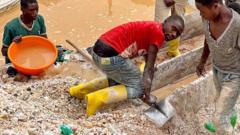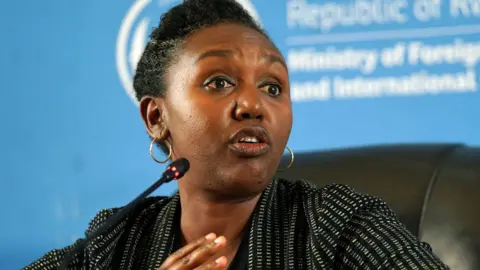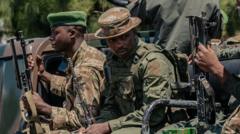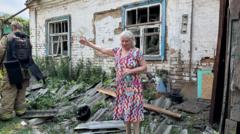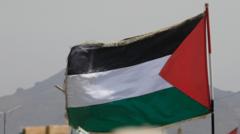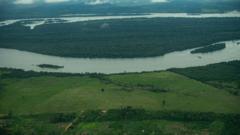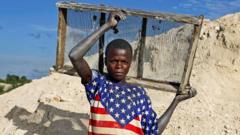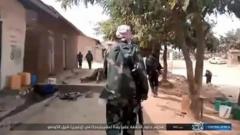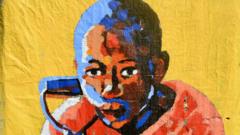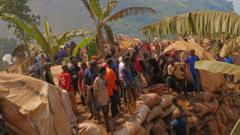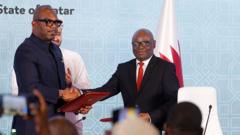In the lush Masisi Hills of North Kivu province, the Rubaya mine stands as a cornerstone of the global mobile phone industry, despite its turbulent backdrop. Recently, the M23 rebel group granted rare access to this expansive mining site, revealing an active community of over 10,000 miners, each engaged in the demanding task of extracting precious coltan ore.
Patrice Musafiri, overseeing the operations since M23's takeover last year, guides the workers through a landscape dotted with pits and tunnels, where the sweltering conditions are a daily reality. For many, including miner Peter Osiasi, this employment is a lifeline that allows them to support families and save for future aspirations. "Mining has really helped me," Osiasi reflected, emphasizing the challenges faced underground but also the hope it brings.
The mine is set about 60 kilometers from the bustling city of Goma, sitting atop 15% of the world’s coltan reserves, which has drawn interest from various armed groups over decades. The region's instability is deep-rooted, characterized by complex ethnic rivalries and the influence of external actors. Recent ceasefire agreements aim to quell tensions, yet the M23 remains a dominant force, accused by many, including the UN, of receiving support from Rwanda—a claim both parties deny.
While the miners work diligently under the M23's purported safety measures, conditions remain precariously low-paying, leading to frustrations among laborers regarding their compensation. The local community eagerly seeks foreign investments that prioritize infrastructure improvement, driving economic growth, and augmenting miners' wages. Musafiri emphasized that any investment must ultimately benefit the people of Rubaya—focusing on jobs, schools, and healthcare rather than purely profits.
The United States’ involvement in these negotiations could signify a change; however, meticulous discussions are still required to untangle the web of alliances and grievances. Political analysts suggest that a stable investment environment may deter further violence, yet clarity on operational dynamics with the M23's continued presence is lacking.
As the peace process unfolds—driven by international mediation—the miners, like Osiasi, remain steadfast in their hope for tranquility and improved livelihoods, pleading for a future where their labor is justly rewarded. "Keep and maintain peace in our area," he urged, embodying the dreams of many who toil in the shadows of Rubaya's scarred earth.

